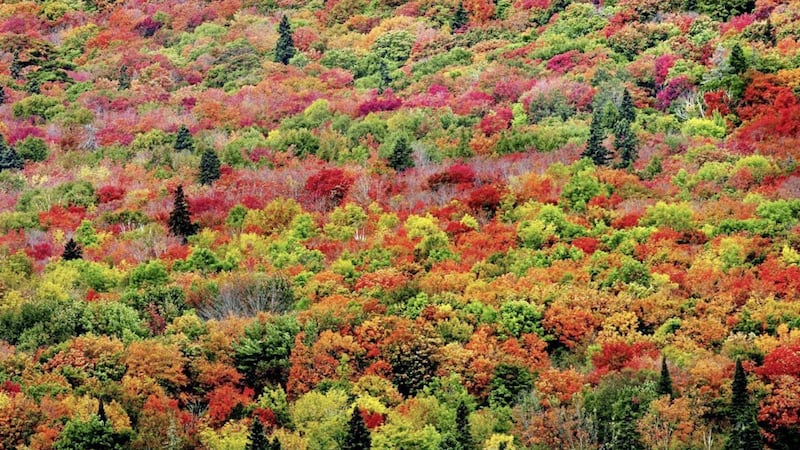ACCORDING to the latest survey, there is just over 112,500 hectares of woodland in Ireland’s six north eastern counties. Tyrone has the most coverage, while Armagh has least.
My back of envelope calculations suggest that overall this is is around 434 sq miles of a total land area of 5,456 sq miles – less than one per cent. When you subtract commercial conifer plantations from these figures, the total area occupied by native woodland becomes miniscule. Hedgerows, groves, coppices and one-off trees improve the picture slightly but it’s very possible that more of Northern Ireland’s total area is covered by bungalows than native trees.
Given the role of trees in Irish heritage and culture over the centuries these facts are quite embarrassing, shameful even. Equally, given the part played by trees in capturing carbon dioxide and transforming it into oxygen, it makes no sense whatsoever to continue to destroy woodland pockets in order to create more environmentally damaging farmland.
My own garden’s woodland coverage is around 30-40 per cent. Some of the trees were already there when I moved in, others I planted. They serve a number of functions and purposes, ranging from windbreaks and wildlife habitats to fruit production and ornamentals. I may curse the amount of leaves that need to be swept up from paths and removed from the pond surface at this time of year but overall the contribution made by the trees in terms of atmosphere, aesthetics and boosting biodiversity is very positive.
However, before planting trees there are a number of considerations. Some trees can grow very big so be wary of planting an oak or ash too close to your home. The roots can also interfere with drains and foundations in some cases, prompting many insurance companies to ask if there are any trees within eight metres of your home.
If buying a single, or specimen, tree I suggest you spend a bit of money (at least £30-40) and visit a locally owned, reputable nursery before making your selection. Here you'll find young, containerised trees that can be planted any time of year, though spring is probably best.
But if you're planning to plant several trees or a small woodland, then it's best to seek out bare root trees. Buying bare root at this time of year means you avoid the additional expense of a pot and the accompanying compost. Moreover, these young whips' roots will take to the ground much quicker than their pot-raised counterparts. It could also be argued that the likes of alder, blackthorn, hawthorn and silver birch will bring as much beauty, if not more, than exotic species, especially if you're seeking a naturalised look.
When you buy your bare root trees at the garden centre or specialist nursery, it's important to get them home quickly to avoid the roots drying out. Before you pick them up it's a good idea to have trench dug so the saplings can be 'heeled in' until they are ready for planting proper.
Soak the roots of the tree in a bucket of water before planting and plant them on cleared ground where there's a lack competition from weeds.
Plant the tree so it sits atop a small hill of soil with the point where the roots join the trunk even with the surface. Firm it in well and if it stands more than three feet high, attach a stake to prevent damage from wind rock. Keep the sapling well watered for the first few months and until it gets established add some mulch to fertilise and help suppress weeds.








